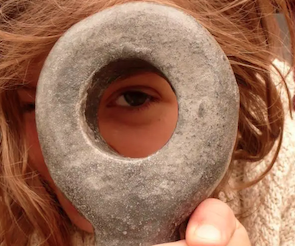In Milo’s lecture last week, he briefly mentioned and explained beat frequencies, using two tuning forks to demonstrate. Beat frequencies were something I had heard through music before but had never been aware of what was actually occurring and why. The fluctuation in sound that occurs is something I find intriguing and so wanted to learn more about it, hence this blog post.
A beat frequency is the result of two slightly different frequencies occurring at the same time. Whilst you hear each individual tone, you’re also able to detect an interaction between the waves, hearing a fluctuation in amplitude. This perceived fluctuation in volume is the beat, which oscillates at a rate equal to the difference between the two original frequencies. For example, if two notes with a frequency of 440 Hz and 445 Hz, the beat frequency will be 5 Hz, meaning you’d hear 5 beats per second. The interference between sound waves can be a constructive or destructive interference.
- Constructive Interference: When waves align, resulting in a larger amplitude.
- Destructive Interference: When waves are out of phase, resulting in a smaller amplitude.
The back and forth between constructive and destructive interference causing the modulation of amplitude.
Beat frequencies are used for a number of purposes including-
- Tuning Instruments- When 2 notes are played together, if in tune then no beat should be heard, however if out of tune the ‘beating’ sound will be heard.
- Binaural Beats- When each ear is hearing a different frequency, the brain essentially creates its own beat frequency which can be used for relaxation and focus.
- Radars- Some radar systems like speed sensors or military and aviation radars use the Doppler effect, which is a change in frequency due to movement, to determine the speed of an object, beat frequency helps in used for this process.
- Radio Broadcasting- Beat frequencies are used for multiple aspects of radio broadcasting, including signal processing and transmission.
Beat frequencies can also be used not just in a technical way, but also a creative one. They can be used to shape textures, add emotion and immerse the listener. Synthesisers often use two oscillators tuned to slightly different frequencies, supplying a pulsing texture to the sound- particularly noticeable in drones, these textures can add depth to a sound that without would sound rather boring. When involving spatialisation, beat frequencies can create a sense of movement, panning across speakers, – this is a useful tool in ambient and experimental music especially. When it comes to acoustic instruments and spaces, beat frequencies emerge naturally when nearly identical pitches and played or sung. For example, the larger pipes of an organ create slow, deep beat frequencies when pipes are slightly out of tune, this creates a very rich underlying texture, that although may not be noticeable, can be incredibly useful for creating an atmosphere.
Many artists intentionally use beat frequencies within their work as part of the musical emotion. La Monte Young, an American composer, musician, and performance artist, was a central figure in the Fluxus movement and is best known for his exploration of sustained tones and drone music. Young often played with microtonal tunings throughout his work as he began to focus on the physical experience of sound. ‘The Well-Tuned Piano’ is perhaps Young’s most famous solo piece of work, involving a piano which is carefully tuned to emphasise specific harmonic relationships between notes, the tuning resulted in complex frequency beat patterns that slowly shrift throughout the piece. The pulsing that is created through the beats is used to draw the audience physically into the piece, creating a meditative, sonic environment in which the audience dive into.
Another example of an artist who has worked with beat frequencies is Alvin Lucier, specifically his work; “I Am Sitting in a Room”. The piece features Lucier recording himself narrating a text, and then playing the tape recording back into the room while re-recording it. The new recording is then played back and re-recorded, and this process becomes a cyclical loop. Due to the room’s shape and size, certain resonant frequencies become emphasised while others are reduced. After the cycle goes on for long enough, the words become indistinguishable and are replaced by the intensified feedback sounds of the room’s resonance. The reinforcement of the frequencies causes a distinct beating, phasing effect.
‘The Well-Tuned Piano’ ‘I Am Sitting in a Room’


These pieces explore psychoacoustics as a tool throughout composition, they’re able to shape the listener’s experience through the interference of patterns rather than traditional techniques of melody or rhythm. The pulsing that is created through beat frequencies often sounds similar to natural, rhythmic movements of the body- like the heartbeat, and so we are able to find an unconscious comfort in the sounds created. This is one reason as to why it is able to evoke an emotional, and sometimes spiritual presence that we can emerge ourselves in.
